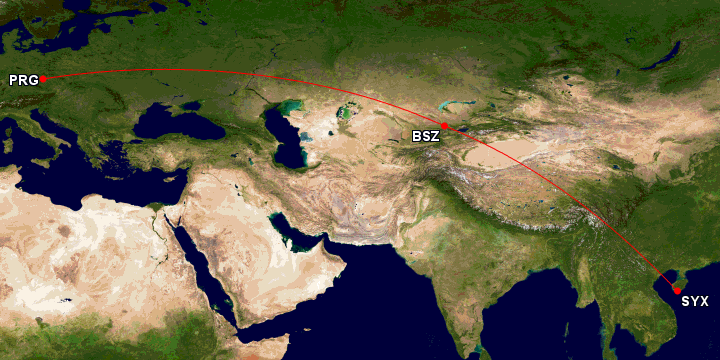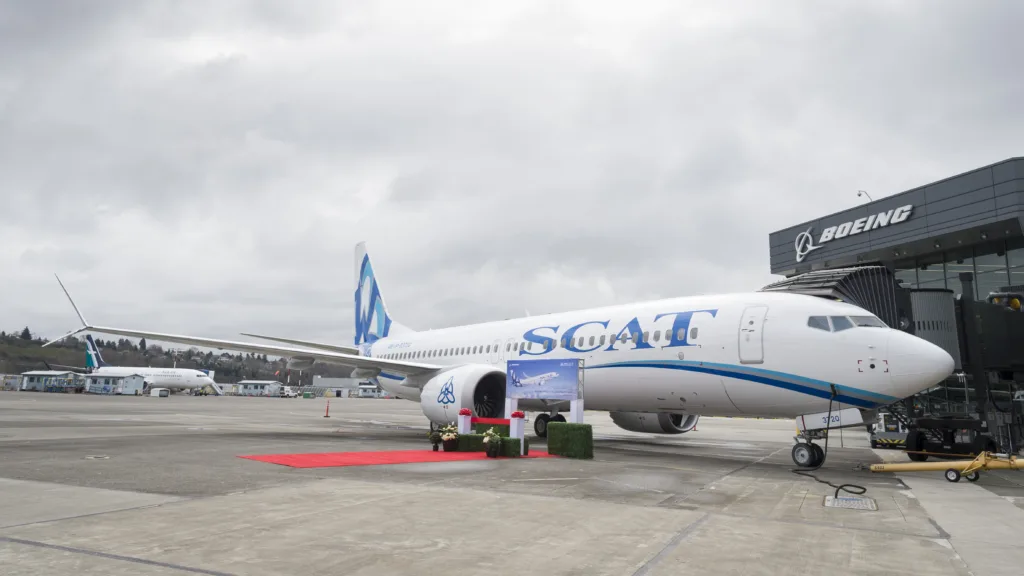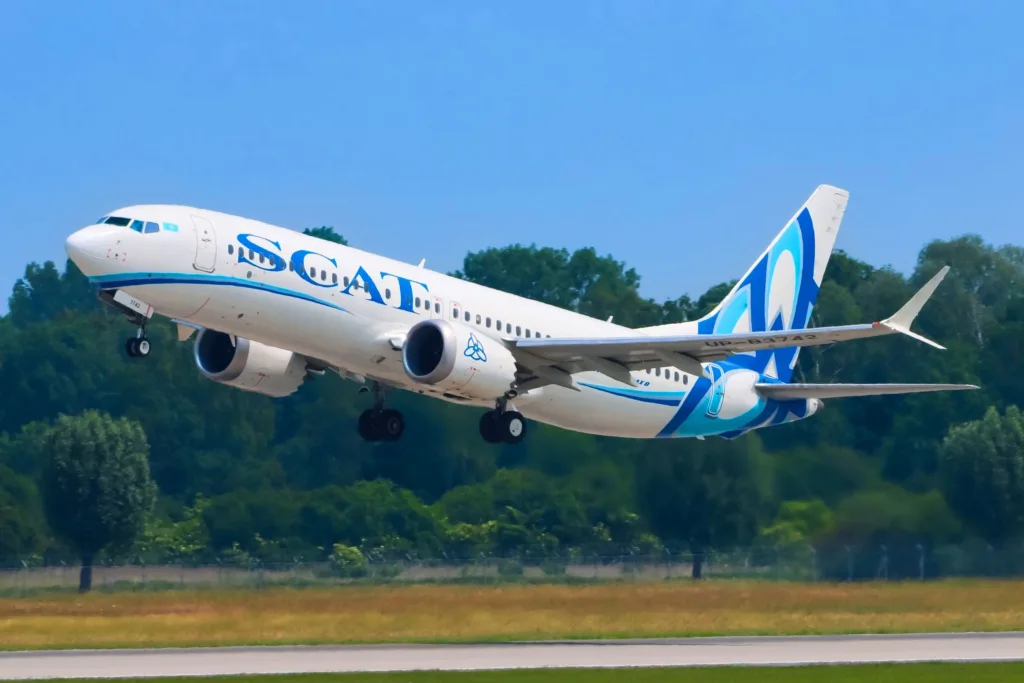In a move that surprised many aviation watchers, SCAT Airlines, Kazakhstan’s second-largest carrier announced that starting 21 December 2025 it will operate a weekly flight between Václav Havel Airport Prague (PRG) and Sanya Phoenix International Airport (SYX) on Hainan Island, China.
The weekly flights will be conducted by a Boeing 737 MAX 9 in an all-economy 213-seat configuration. The scheduled block time is up to 14 hours 15 minutes westbound and around 12 hours 40 minutes eastbound. This makes the journey one of the longest ever flown by a 737 with a technical stop.
What makes the route even more remarkable is the stop in Bishkek Manas International Airport (BSZ/FRU) in Kyrgyzstan for refuelling. Although the stop is purely technical, the published schedule presents the flight as nonstop, giving the appearance of a direct Prague–Sanya link.

Aircraft, Schedule & Market Strategy
The choice of the Boeing 737 MAX 9 is unusual for such a long duration flight. Typically narrow-body aircraft such as the 737 aren’t used for 12-14 hour journeys, yet SCAT is clearly leveraging the technical stop to make it feasible. According to published schedules,
- Flight DV481 will depart Sanya at 08:05, arriving in Prague at 15:20 local time after the technical stop.
- Flight DV482 departs Prague at 16:50, arriving in Sanya at 12:30 the following day.
The route covers approximately 5,486 miles (8,831 km) and taps into a niche leisure market, linking Europe’s Czech capital with one of China’s resort hotspots. Tickets for the new route are already on sale from around US$434 one-way, making it an attractive proposition for winter-sun travelers.

Why This Route Matters?
For SCAT Airlines, the new Prague–Sanya service signals ambitious global aspirations. The carrier, founded in 1997 and based in Shymkent, Kazakhstan, has gradually expanded beyond Central Asia into Europe. This new route further broadens its footprint and highlights how smaller carriers may exploit niche sectors overlooked by larger airlines.
From an aviation-industry perspective, the use of a narrow‐body 737 MAX for such a long flight is atypical. It underscores how refuelling stops can stretch aircraft capabilities and open unexpected route opportunities.
Moreover, this route offers passengers a one-aircraft alternative to multi-leg journeys via larger hubs, albeit at the potential cost of comfort.

Passenger Experience & Considerations
There is no doubt that flying 12-14 hours in a single-class all-economy 737 will be a test of comfort, especially on a narrow-body aircraft originally designed for much shorter flights. Moreover, enthusiasts note that the absence of in-seat entertainment or onboard WiFi may raise comfort concerns for this duration.
Travelers should also pay close attention to whether they remain on board during the technical stop, as SCAT has indicated passengers will not deplane during the Bishkek stop. While efficient, it still counts as one extended flight.
Visa aspects are also favourable as Sanya and Hainan Island allow visa-free access for many nationalities, adding attractiveness for Czech and European leisure travelers.
Looking Ahead: Implications for the Industry
The launch of this route by SCAT Airlines may prompt other smaller or niche carriers to explore “long-haul” narrow‐body operations with technical stops. It challenges conventional route planning and could stimulate more leisure focused services linking resort destinations with secondary European hubs.
However, the unconventional route also raises questions about passenger comfort, operational economics, and aircraft utilization. If successful, SCAT’s strategy could become a blueprint for similar carriers. If not, it may underscore the limitations of pushing narrow‐body jets into ultra‐long sectors.

Bottom Line
SCAT Airlines’ new Prague-to-Sanya route using a Boeing 737 MAX 9, scheduled to last over 14 hours one way with a technical stop in Bishkek, is among the most unusual and ambitious narrow‐body flights launched in recent years.
For leisure travelers seeking a direct link between Europe and China’s Hainan Island, it presents an opportunistic option. For the aviation industry, it provides a fascinating case study of route innovation, aircraft versatility, and shifting market dynamics.
Whether this flight becomes a blueprint or an exception remains to be seen, but one thing is certain: SCAT has grabbed attention.
Please join our Telegram Channel for the latest aviation updates.
Source: One Mile at a Time

